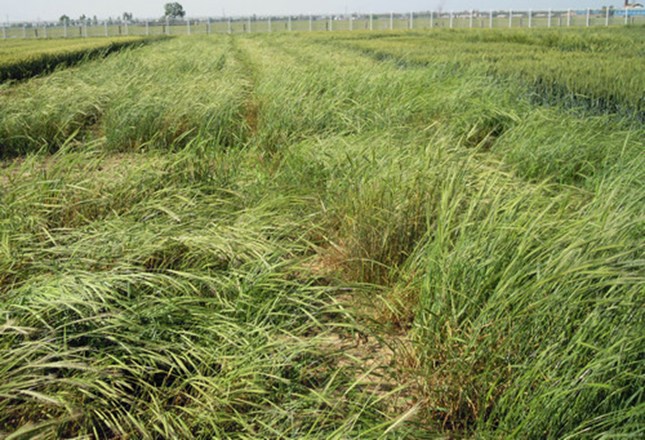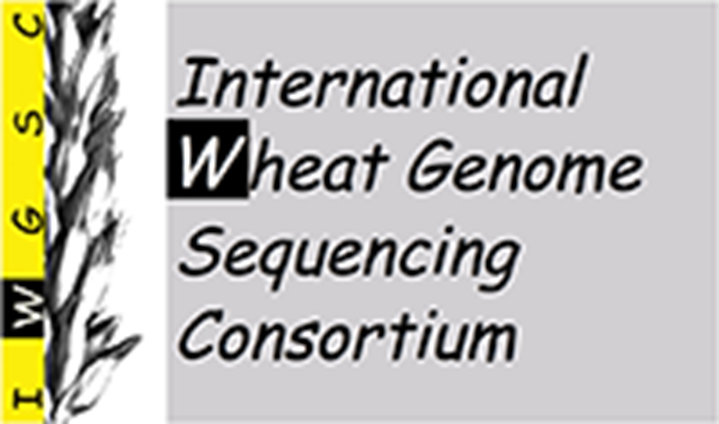High Quality Wheat A Genome Sequence generated by China
Agriculture Scientist are worried to feed the world wide population in 2050. Chinese scientists generate a high-quality wheat A genome sequence. Chinese researchers have completed the genome sequencing of the wheat A subgenome, and generated a high-quality draft of its chromosomes, which could promote genetic improvements in cultivated wheat.

Agriculture Scientist are worried to feed the world wide population in 2050. Chinese scientists generate a high-quality wheat A genome sequence.
Chinese researchers have completed the genome sequencing of the wheat A subgenome, and generated a high-quality draft of its chromosomes, which could promote genetic improvements in cultivated wheat.
The study by researchers at the Institute of Genetics and Developmental Biology was published in the journal "Nature".
To illustrate the genomic structures of wheat, the wheat genome research team of State Key Laboratory of Plant Cell and Chromosome Engineering, Institute of Genetics and Developmental Biology, Chinese Academy of Sciences, collaborating with the Genomic Sequencing and Analysis Laboratory of the institute, BGI Shenzhen and Keygene in the Netherland, generated a high-quality genome sequence of T. urartu by combining BAC-by-BAC sequencing, single molecule real-time whole-genome shotgun sequencing and next-generation mapping technologies.
Researchers have generated a molecular map of seven chromosomes of the wheat A subgenome and identified 41,507 protein-coding genes, providing high-quality genomic information and a new perspective for studying genetic variation in wheat.
Sequencing the wheat genome has long been considered an insurmountable challenge, due to the high complexity of the wheat genome. But improving average wheat yields has become a major objective with genome sequencing as its prerequisite.
The International Wheat Genome Sequencing Consortium (IWGSC) was created in 2005 by a group of wheat growers, plant scientists, and public and private breeders to change this paradigm. Today, the international public-private collaborative consortium has more than 1,500 members in 60 countries. The goal of the IWGSC is to make a high quality genome sequence of the bread wheat cv. Chinese Spring publicly available, in order to serve as a foundation for the accelerated development of improved varieties and to empower all aspects of basic and applied wheat science.
Comparative analysis with the A, B and D subgenomes of bread wheat also showed that four large chromosomal structure variations occurred during wheat evolution. Population genomics analysis revealed that T. urartu accessions from the Fertile Crescent formed three distinct groups with different adaptation to high altitude and biostress, such as powdery mildew disease.

The genome sequence of T. urartu provides a diploid reference for the analysis of polyploidy wheat genomes, and is a valuable resource for systematically studying the genome evolution and genetic variations in wheat and related grasses. It promises to facilitate the discovery of genes conferring important traits for the genetic improvement of wheat to meet the future challenges of global food security and sustainable agriculture.
Bread wheat (Triticum aestivum L.), feeding more than 35 percent human population and providing about 20 percent of calories and proteins consumed by humans, is a globally important crop due to its enhanced adaptability to a wide range of climates and improved grain quality for the production of baker's flour.
The genome sequence of T. urartu provides a diploid reference for the analysis of polyploidy wheat genomes, and is a valuable resource for systematically studying the genome evolution and genetic variations in wheat and related grasses. It promises to facilitate the discovery of genes conferring important traits for the genetic improvement of wheat to meet the future challenges of global food security and sustainable agriculture.
Population genomics analysis revealed that T. urartu accessions from the Fertile Crescent formed three distinct groups with different adaptation to high altitude and biostress, such as powdery mildew disease.
Due to its complex polyploidy nature (hexaploid, containing A, B and D three subgenomes) and large genome size (17 Gb), the genetic and functional analysis of bread wheat is extremely challenging.
The A genome, originates from the diploid wild einkorn wheat Triticum urartu with a genome size about 5 Gb, is the basic genome of bread wheat and other polyploidy wheats. It plays a central role in wheat evolution, domestication and genetic improvement.
To illustrate the genomic structures of wheat, the wheat genome research team of State Key Laboratory of Plant Cell and Chromosome Engineering, Institute of Genetics and Developmental Biology, Chinese Academy of Sciences, collaborating with the Genomic Sequencing and Analysis Laboratory of the institute, BGI Shenzhen and Keygene in the Netherland, generated a high-quality genome sequence of T. urartu by combining BAC-by-BAC sequencing, single molecule real-time whole-genome shotgun sequencing and next-generation mapping technologies.
Then they found that the collinearity originated from the ancient genome duplications in T. urartu were strongly disrupted because of extensive amplifications of transposable elements and widespread gene loss, compared to rice, sorghum and Brachypodium.
Comparative analysis with the A, B and D subgenomes of bread wheat also showed that four large chromosomal structure variations occurred during wheat evolution.
Chander Mohan
Krishi Jagran/New Delhi
Download Krishi Jagran Mobile App for more updates on the Latest Agriculture News, Agriculture Quiz, Crop Calendar, Jobs in Agriculture, and more.